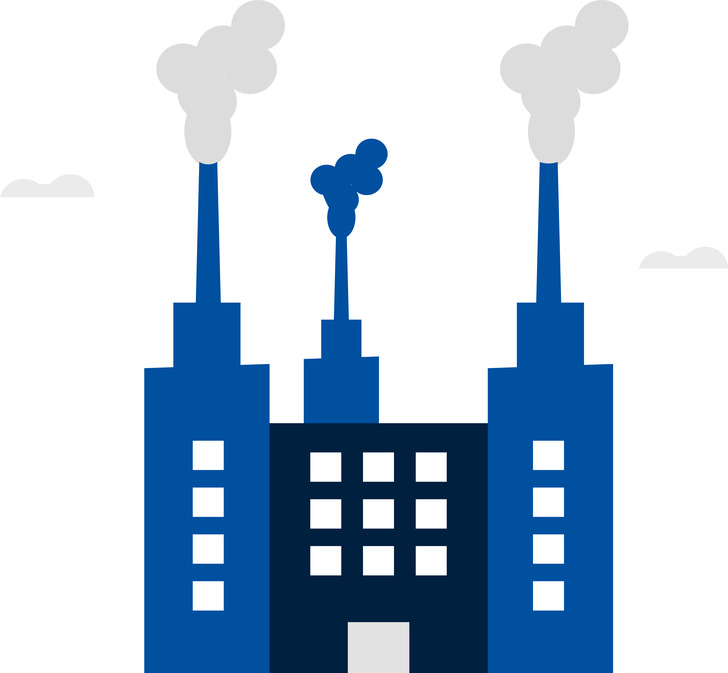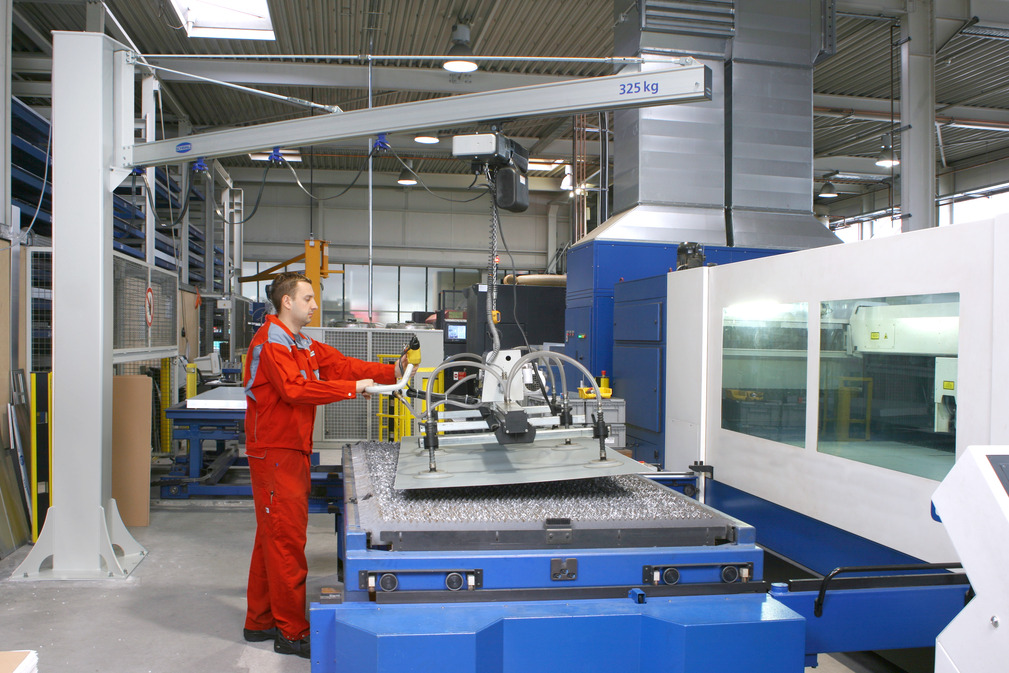With the vacuum handling system, we are now significantly protecting the health of our employees.∼ Oliver Fett, Plant Manager LTG AG

TG Uses Schmalz Vacuum Lifters for Metal Sheets up to 500 kg
Schmalz has implemented a custom-made solution for sheet metal prefabrication for LTG AG. The combination of vacuum lifting device and aluminum jib crane not only enables ergonomic and efficient handling of heavy sheet metal panels, but also contributes to the health and satisfaction of employees by reducing physical strain and increasing productivity.
Characteristics of the success story
| Industry | Sheet metal |
|---|---|
| Workpiece | Sheet metal |
| Product group | Vacuum Lifting Device VacuMaster Basic |
| Type of handling | Manual Handling |
With Schmalz
2
tons
move ergonomically
The Customer: LTG Aktiengesellschaft
LTG AG is a leading company in ventilation and air conditioning technology. It offers a wide pallet of products for ventilation and air-conditioning applications, including high-performance fans, filter and humidification systems as well as flow rates and pressure regulators. These products are used in various applications such as building air conditioning in schools, offices and hospitals, and in manufacturing or manufacturing processes in industries such as automotive, food and medical technology.
The Challenge
In order to optimize sheet metal prefabrication, LTG AG integrated a laser cutting machine into the production process. Previously, LTG employees had to manually insert sheet metal panels weighing up to 500 kilograms into the laser cutting machine. This was physically very strenuous and posed potential health risks for the employees. One challenge was that the sheets to be handled varied greatly in terms of material, thickness and size. One such metal plate, for example, can be three meters in length, 1.5 meters wide, four millimeters thick and weigh round 144 kilograms. An additional challenge: as the sheet metals are already pre-treated, they must not leave any marks during handling. Although an automated solution with a robot system was considered, it was not economical, as the machine's program runtimes were relatively short compared to the assembly time. For this reason, LTG opted for a vacuum handling solution from Schmalz to facilitate the loading of the laser cutting machine and to protect the health of the employees.
Schmalz's Solution
To release this task, a vacuum lifting device from the VacuMaster Basic 750 series was installed. This device can easily move loads weighing up to 750 kg horizontally. The VacuMaster Basic has a modular design and was specially configured for LTG from the basic elements of operator handle, load beam and suction plates. The required suction force is provided by a vacuum generator and transferred to the workpiece via the suction plates. The suction plates are suitable for smooth and slightly rough surfaces and leave no marks. Unevenness is compensated for by spring plungers. The aluminum load beam also acts as a vacuum reservoir and allows the operator to continuously adapt the position of the eight suction cups to handle different workpiece formats. The device has an audible warning device and a vacuum gauge with a red/green display. The operator can control the device ergonomically via the operator handle and at the same time maintain a safe distance from the load. An aluminum column-mounted jib crane with chain hoist was installed for the lifting force, which can move loads weighing up to 1,000 kilograms and has a swivel angle of 270 degrees. The swivel angle was limited to avoid collisions with the laser cutting machine. The five-meter-long jib also enables a large working area. The employee picks up the top sheet metal from the stack using the VacuMaster and transports it to the machine table using the responsive aluminum crane. The effort required for the aluminum crane systems is significantly less than for conventional steel solutions. The application saves more than 60 percent of force and can therefore handle even heavy loads effortlessly and in a health-friendly, health-protective manner. This reduces sickness-related downtime and increases employee satisfaction.



